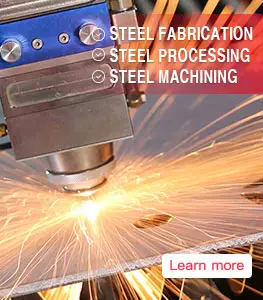Welcome to BBN Steel Materials Factory
DIN 17100 ST37-2 carbon steel chemical composition

DIN 17100 ST37-2 carbon steel is a common structural steel that is used in the construction and engineering industries. St37-2 carbon steel has a minimum yield strength of 235 MPa and a tensile strength of 360-510 MPa. The chemical composition of DIN 17100 ST37-2 carbon steel is:
Element Percentage
C 0.17
Si 0.15-0.30
Mn 0.35
P 0.035
S 0.035
Carbon is the main alloying element in ST37-2 carbon structural steel. The carbon content of this steel is 0.17%, which is relatively low compared to other carbon steels. Carbon steel is a type of steel that contains carbon as the main alloying element. This gives the steel its unique properties, such as its strength and durability. Carbon steel is a popular choice for structural applications due to its low cost and ease of production.
Silicon is also a commonly used alloying element in steel production. It is added to steel to improve its strength and hardness. In DIN 17100 ST37-2 carbon steel, the silicon content is 0.15-0.30%. This helps to improve the steel's toughness and resistance to wear and tear.
Manganese is another alloying element commonly found in steel. It is added to steel to improve its strength and toughness. In DIN 17100 ST37-2 carbon steel, the manganese content is 0.35%. This improves the steel's hardenability, resistance to wear and tear, and toughness.
Phosphorus and sulfur are impurities that are commonly found in steel. These elements can have a negative impact on the steel's properties if present in high levels. In DIN 17100 ST37-2 carbon steel, the phosphorus and sulfur content are both 0.035%. This makes it a low impurity steel, which is desirable for structural applications.
The chemical composition of DIN 17100 ST37-2 carbon steel gives it a number of properties that make it suitable for structural applications. One of the most important properties of this steel is its strength. It has a minimum yield strength of 235 MPa and a tensile strength of 360-510 MPa. This makes it a strong and durable material for use in construction and engineering applications. Another important property of DIN 17100 ST37-2 carbon steel is its toughness. This steel has a high toughness, which means that it is able to withstand high levels of stress and strain without breaking or deforming. This makes it a popular choice for use in structures that are exposed to high levels of stress or loading.
The low carbon content of DIN 17100 ST37-2 carbon steel also makes it easy to weld. Welding is a common method used in construction and engineering to join two pieces of steel together. The low carbon content of this steel means that it is less likely to form cracks or other defects during the welding process. The chemical composition of DIN 17100 ST37-2 carbon steel also makes it suitable for use in corrosive environments. This steel has a low sulfur content, which means that it is less likely to corrode or form rust when exposed to moisture or other corrosive elements.
In conclusion, DIN 17100 ST37-2 carbon and low-alloy steel is a common structural steel that is used in the construction and engineering industries. Its chemical composition gives it a number of properties that make it suitable for structural applications, including its strength, toughness, and resistance to corrosion. It is a low impurity steel that is easy to weld, making it a popular choice in construction and engineering applications.
.webp)
.webp)
.webp)
.webp)
.webp)
.webp)
.webp)
.webp)
.webp)



Leave a Message